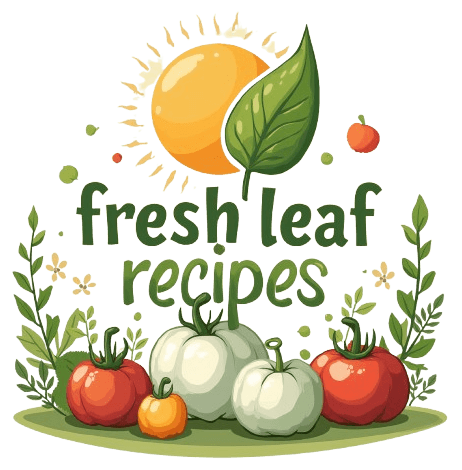1: What Is Bird’s Nest Soup?
Definition and Origins of Bird’s Nest Soup
Bird’s nest soup might sound unusual at first, but it’s far from your average bowl of twigs and twine. This prized delicacy is actually made from the edible nests of swiftlets—small birds native to Southeast Asia. These nests are crafted entirely from the birds’ gelatinous saliva, which hardens when dry. Once soaked and gently simmered, the result is a smooth, slightly sweet soup that’s treasured in many Asian cultures for both its flavor and its traditional health benefits.
Table of Contents
This soup dates back to the Tang Dynasty, over 1,000 years ago, where it was reserved for Chinese royalty and the elite. It’s long been seen as a status symbol and a tonic for wellness, beauty, and longevity.
Why It’s Called ‘Bird’s Nest’ Soup
The name isn’t poetic—it’s literal. The swiftlet’s nest is harvested directly from coastal caves or man-made bird houses. What makes it so rare is that these birds only build nests a few times a year, and the nests must be carefully harvested by hand. That exclusivity, combined with the time-consuming cleaning process, is why bird’s nest soup is often referred to as “white gold” in the culinary world.
2: The History and Cultural Significance
Bird’s Nest Soup in Ancient Chinese Cuisine
Historically speaking, bird’s nest soup didn’t just appear on the dinner table by chance. It was once reserved exclusively for Chinese emperors and nobles, tracing its roots back over a millennium. The rarity of the nests, along with their painstaking collection, made the dish a true symbol of luxury.
Over time, this exotic delicacy found its way into the homes of wealthy merchants and dignitaries, cementing its place as a treasured item in Chinese culinary tradition.
3: What Is Bird’s Nest Soup Made Of?
The Edible-Nest Swiftlet and Its Saliva
Alright, let’s talk about the elephant in the room—or rather, the spit in the soup. Bird’s nest soup is made from the edible nests of a bird called the edible-nest swiftlet. These little birds build their nests high in caves or wooden houses using strands of their own sticky saliva. Yep, that gelatinous web you see in the soup? It’s pure, hardened bird spit. Wild, right?
But once cleaned and cooked, it transforms into a silky, gelatinous treat with a barely-there taste—letting other ingredients shine.
Harvesting and Preparation Process
The harvesting process is no walk in the park. Climbers scale cliffs or ladders to carefully remove the nests without damaging them. Then comes the slow cleaning process to remove feathers and impurities. Only after all that can the nests be gently soaked, simmered, and transformed into the iconic bird’s nest soup.
4: Health Benefits and Nutrition
Traditional Health Claims of Bird’s Nest Soup
In traditional Chinese medicine, bird’s nest soup is practically gold. It’s believed to strengthen the lungs, improve skin tone, and enhance immunity. Some even claim it helps with digestion, sleep, and libido. The kicker? It’s thought to promote youthful skin thanks to its collagen-like content. Whether you’re recovering from illness or simply need a wellness boost, this dish is often part of the ritual.
Scientific Perspective: Nutrition and Skepticism
Here’s the flip side. While the soup is rich in glycoproteins, amino acids, and trace minerals, there’s limited Western research proving its dramatic health claims. Nutritionally, it’s low in fat and carbs, making it a clean and light option. However, experts caution that many of its touted benefits—like anti-aging or fertility boosts—are mostly anecdotal.
Still, many who enjoy bird’s nest soup say it’s not just about health—it’s about tradition, luxury, and feeling good.

5: Why Is Bird’s Nest Soup So Expensive?
Rarity and Labor Behind Each Nest
Let’s be real—bird’s nest soup is no budget meal. These nests are only built a few times a year by edible-nest swiftlets, usually clinging to the walls of sea caves or high rafters. Collecting them? It’s a dangerous job, requiring skilled climbers and delicate handling.
Not only that, but after harvesting, each nest must be cleaned—by hand—to remove feathers and debris. This labor-intensive process adds serious cost.
Market Demand and Status Symbol
Beyond the supply challenges, bird’s nest soup carries major cultural weight. In many Asian communities, serving this soup means honoring guests with prestige and care. High demand, particularly in China and Hong Kong, keeps prices soaring. So yes, you’re partly paying for bird spit, but you’re also buying into centuries of culture, tradition, and exclusivity.
6: Ethical and Environmental Concerns
Overharvesting and Ecological Disruption
While bird’s nest soup is cherished by many, it comes with serious concerns. In the wild, swiftlets build their nests on high cave walls. When harvesters collect nests too often or too soon, it can disturb the birds’ breeding cycles. In some cases, chicks are left behind, leading to declining populations.
As demand grew, so did aggressive harvesting. Entire colonies have been disrupted, pushing conservation groups to sound the alarm. Unfortunately, not every supplier follows responsible methods.
Sustainable Bird Nest Farming Practices
Thankfully, there’s been progress. Today, many nests come from swiftlet farms, where birds build nests in specially designed houses. These farms offer a safer, more controlled way to collect nests without harming the species. If you’re keen on trying bird’s nest soup, look for products labeled as ethically or sustainably harvested. It’s one small way to enjoy this delicacy while respecting nature.
7: How Bird’s Nest Soup Is Prepared and Consumed
Traditional Chinese Cooking Methods
Cooking bird’s nest soup isn’t complicated—but it does require patience. First, the nest is soaked for hours, sometimes overnight, until it softens. Then, it’s simmered slowly, often with rock sugar, in a double boiler. The result? A smooth, jelly-like broth with a hint of sweetness. Some traditional versions also include ginseng, red dates, or goji berries for added health benefits.
Modern Variations and Commercial Products
Nowadays, you’ll find bird’s nest soup bottled and ready to sip from high-end brands. Some recipes even blend it into smoothies or desserts. While purists stick to the classic preparation, younger generations are definitely reinventing how it’s enjoyed.
8: Legal and Trade Restrictions
Why Bird’s Nest Soup Is Banned in Some Regions
While bird’s nest soup is highly prized in many Asian countries, it’s actually banned or restricted in others—mostly due to health and safety concerns. In the past, poorly cleaned nests led to contamination and the risk of infectious disease. That’s why countries like the U.S. and Australia have strict import rules.
Import and Export Regulations
To legally trade bird’s nests, suppliers must meet tight inspection standards. In fact, only nests from approved farms with proper sanitation certifications are allowed through customs in many countries.
9: FAQs
What is bird’s nest soup made of?
Simply put, bird’s nest soup is made from the hardened saliva of the edible-nest swiftlet. The birds spin these nests on cave walls using their sticky spit, which hardens when dry. Once harvested, the nests are soaked and simmered into a jelly-like soup.
Is bird nest soup actually healthy?
Many people believe so! It’s rich in glycoproteins, amino acids, and trace minerals. Traditionally, it’s used to boost energy and improve skin. Still, scientific studies are limited, and some experts say the benefits are more cultural than clinical.
Why is bird saliva so expensive?
Because it’s rare and tough to harvest! Each nest takes weeks to build, and collecting it—often from high, dangerous places—takes serious skill. Add the delicate cleaning process, and you’ve got one pricey ingredient.
What are bird nests made of?
In the case of bird’s nest soup, the nests are made entirely of swiftlet saliva. No twigs, no mud—just pure, sticky bird spit!
10: Final Thoughts: Is Bird’s Nest Soup Worth the Hype?
There’s no denying it—bird’s nest soup is one of the most unique delicacies on Earth. From its unusual main ingredient to its deep roots in Asian culture, this soup blends tradition, luxury, and curiosity in every spoonful. While some folks swear by its health benefits, others enjoy it simply for the experience.
If you’re thinking of trying it, consider sourcing it from sustainable farms to support ethical practices. Whether you’re drawn by the wellness claims, the cultural heritage, or just pure culinary adventure—bird’s nest soup is a story in a bowl. And honestly, it’s one worth tasting at least once.
Author’s Top Recipes Picks:
Cheesy Potato Soup Like Grandma’s
Italian Sausage Soup That Warms the Soul
Print
Bird’s Nest Soup Price Tag: Luxury, Legend, or Lie?
- Total Time: 7 hours
- Yield: 2 servings 1x
- Diet: Gluten Free
Description
Bird’s nest soup is a luxurious, traditional Chinese delicacy made from the edible nests of swiftlets. Known for its soft, gelatinous texture and believed health benefits, this subtly sweet soup is often served during special occasions, festive banquets, or as a rejuvenating tonic. Light yet rich in amino acids and minerals, it’s a soothing dish that’s both elegant and nourishing.
Ingredients
- 1 whole edible bird’s nest (cleaned and soaked)
- 2 cups filtered water
- 1 tablespoon rock sugar (adjust to taste)
- Optional: goji berries or red dates for added flavor and health benefits
Instructions
- Soak the bird’s nest in cool water for 6–8 hours or overnight, until soft and expanded.
- Drain and gently rinse the nest to remove any remaining impurities.
- In a small saucepan or double boiler, combine the soaked nest with 2 cups of water.
- Simmer on low heat for about 30–45 minutes, or until the texture becomes soft and gelatinous.
- Add rock sugar and stir until fully dissolved.
- Optionally, add goji berries or red dates in the last 10 minutes of cooking.
- Serve hot or warm.
Notes
- Use only clean, high-quality nests from a trusted source.
- A double boiler helps maintain a gentle temperature and preserve nutrients.
- Add ginseng, pandan leaves, or coconut milk for unique variations.
- The soup can be made in advance and stored chilled for up to 2 days.
- Prep Time: 6–8 hours (soaking)
- Cook Time: 45 minutes
- Category: Soup
- Method: Simmering / Double Boil
- Cuisine: Chinese

